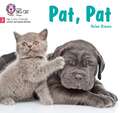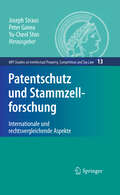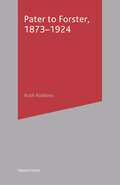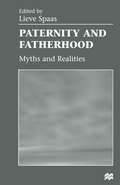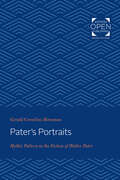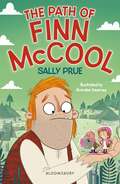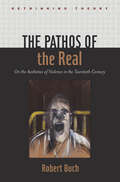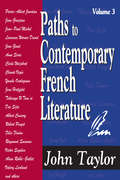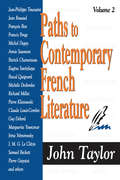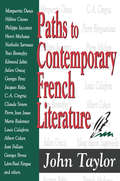- Table View
- List View
The Pataphysician’s Library: An Exploration of Alfred Jarry’s ‘Livres pairs’
by Ben FisherThe Pataphysician’s Library is a study of aspects of 1890s French literature, with specific reference to the traditions of Symbolism and Decadence. Its main focus is Alfred Jarry, who has proved, perhaps surprisingly, to be one of the more durable fin-de-siècle authors. The originality of this study lies in its use of the enigmatic list of books termed the livres pairs, which appears in Jarry’s 1898 novel Gestes et Opinions du docteur Faustroll, pataphysicien, his best-known prose work. The greatest interest of the livres pairs lies in a group of works by Jarry’s friends and contemporaries, primarily Leon Bloy, Georges Darien, Gustave Kahn, Catulle Mendes, Josephin Madan, Rachilde, and Henri de Regnier. Several of these authors feature as the lords of islands visited by the pataphysician Dr Faustroll in his curious voyage around Paris. In conjunction with Jarry’s own works, the contemporary livres pairs serve to illustrate the vibrant and experimental atmosphere in which these authors worked.
Patentschutz und Stammzellforschung: Internationale und rechtsvergleichende Aspekte (MPI Studies on Intellectual Property and Competition Law #13)
by Joseph Straus Peter Ganea Yu-Cheol ShinDie Regenerative Medizin setzt auf die Forschung mit humanen embryonalen Stammzellen. Ebenso umstritten wie die Forschung selbst ist die Patentierung von Erfindungen, die sich auf menschliche Stammzellen beziehen. Die Beiträge analysieren die aus rechtlicher wie ethischer Sicht komplizierte Rechtslage der Patentierung in diesem Bereich. Betrachtet werden neben dem europäischen Patentrecht die patentrechtlichen Regelungen Chinas, Deutschlands, Frankreichs, Japans, Kanadas, Koreas, Österreichs, der Schweiz, der USA und des Vereinigten Königreichs.
Pater to Forster, 1873-1924 (Transitions)
by Ruth RobbinsWas the late nineteenth century 'Victorian' or 'modern'? Why did the New Woman disappear from literary history? Where did T. S. Eliot's poetics of the city come from?In this essential guide, Ruth Robbins explores an era often named an 'age of transition' which exists uneasily between the apparent certainties of the Victorians and the advent of a Modernist aesthetics of instability. Robbins considers some of the central literary categories and themes of the period (decadence, realism, nostalgia, New Woman writing, degeneration, imperialism and early modernism) in writings by both major and 'minor' writers, thereby creating a complex picture of transitions, continuities and breaks with the past. By examining this tumultuous era as an age in its own right, Pater to Forster, 1873-1924 offers the reader a rather different history of the late Victorians and Modernists, and retells that history from a new perspective.
Pater to Forster, 1873-1924 (Transitions)
by Ruth RobbinsWas the late nineteenth century 'Victorian' or 'modern'? Why did the New Woman disappear from literary history? Where did T. S. Eliot's poetics of the city come from?In this essential guide, Ruth Robbins explores an era often named an 'age of transition' which exists uneasily between the apparent certainties of the Victorians and the advent of a Modernist aesthetics of instability. Robbins considers some of the central literary categories and themes of the period (decadence, realism, nostalgia, New Woman writing, degeneration, imperialism and early modernism) in writings by both major and 'minor' writers, thereby creating a complex picture of transitions, continuities and breaks with the past. By examining this tumultuous era as an age in its own right, Pater to Forster, 1873-1924 offers the reader a rather different history of the late Victorians and Modernists, and retells that history from a new perspective.
Paternity and Fatherhood: Myths and Realities
by Lieve Spaas Trista SelousWhat kind of connotation does the word 'father' have in everyday language? How have states and governments defined and manipulated the paternal role? What is a 'father-figure'? What can literature tell us about absent or overbearing fathers? How far is the cultural construct of fatherhood linked to biological paternity, and what is biological paternity? These are some of the questions explored through the chapters in this book, which together offer a fascinatingly complex view of fatherhood across the centuries.
Pater's Portraits: Mythic Pattern in the Fiction of Walter Pater
by Gerald Cornelius MonsmanMonsman undertakes a comprehensive critical analysis of Walter Pater's fiction, which presents the critic with numerous causes of frustration, not the least of which is a lack of both dramatic narration and description. Pater is rarely vivid and firsthand in his fiction; he tends instead toward exposition. Monsman's emphasis in Pater's Portraits is "tracing out" the conscious artistic structure of Pater's fiction. The scope of Pater's writings comprises nothing less than Western culture itself; its subject is all that man has written, thought, said, sung, hoped, or prayed as a civilized creature over two and one-half millennia. Pater's success in handling such panoply is attributable to his discovery of a coherent pattern by which art, religion, and life can be organized. Monsman aims to discover in Pater's fiction the use of old scientific-religious patterns of myth to explain moments of religious and cultural awakening, to reveal the way in which one man arrived at a credo that would answer to the desolation of life and culture.
Pater's Portraits: Mythic Pattern in the Fiction of Walter Pater
by Gerald Cornelius MonsmanMonsman undertakes a comprehensive critical analysis of Walter Pater's fiction, which presents the critic with numerous causes of frustration, not the least of which is a lack of both dramatic narration and description. Pater is rarely vivid and firsthand in his fiction; he tends instead toward exposition. Monsman's emphasis in Pater's Portraits is "tracing out" the conscious artistic structure of Pater's fiction. The scope of Pater's writings comprises nothing less than Western culture itself; its subject is all that man has written, thought, said, sung, hoped, or prayed as a civilized creature over two and one-half millennia. Pater's success in handling such panoply is attributable to his discovery of a coherent pattern by which art, religion, and life can be organized. Monsman aims to discover in Pater's fiction the use of old scientific-religious patterns of myth to explain moments of religious and cultural awakening, to reveal the way in which one man arrived at a credo that would answer to the desolation of life and culture.
The Path of Finn McCool: A Bloomsbury Reader (Bloomsbury Readers)
by Sally PrueA comic tale based on Irish mythology and the Giant's Causeway from award-winning author Sally Prue. If you go to Ireland and catch the bus to Ballycastle, there by the sea you'll find the Giant's Causeway. This is the story of how the causeway was made and it all starts with Finn McCool, the biggest giant in Ireland, who sets out to find an even bigger giant across the sea in Scotland. But Finn doesn't always have the best ideas and it's up to his wife Oona to come to the rescue when the Scottish giant follows Finn back home...This funny retelling of an Irish myth from award-winning author Sally Prue has whimsical black-and-white illustrations by TBC and is perfect for children who are developing as readers. The Bloomsbury Readers series is packed with brilliant books to get children reading independently in Key Stage 2, with book-banded stories by award-winning authors like double Carnegie Medal winner Geraldine McCaughrean and Waterstones Prize winner Patrice Lawrence, covering a wide range of genres and topics. With charming illustrations and online guided reading notes written by the Centre for Literacy in Primary Education (CLPE), this series is ideal for reading both in the classroom and at home. For more information visit www.bloomsburyguidedreading.com.Book Band: BrownIdeal for ages 8+
The Path of Finn McCool: A Bloomsbury Reader (Bloomsbury Readers)
by Sally PrueA comic tale based on Irish mythology and the Giant's Causeway from award-winning author Sally Prue. If you go to Ireland and catch the bus to Ballycastle, there by the sea you'll find the Giant's Causeway. This is the story of how the causeway was made and it all starts with Finn McCool, the biggest giant in Ireland, who sets out to find an even bigger giant across the sea in Scotland. But Finn doesn't always have the best ideas and it's up to his wife Oona to come to the rescue when the Scottish giant follows Finn back home...This funny retelling of an Irish myth from award-winning author Sally Prue has whimsical black-and-white illustrations by TBC and is perfect for children who are developing as readers. The Bloomsbury Readers series is packed with brilliant books to get children reading independently in Key Stage 2, with book-banded stories by award-winning authors like double Carnegie Medal winner Geraldine McCaughrean and Waterstones Prize winner Patrice Lawrence, covering a wide range of genres and topics. With charming illustrations and online guided reading notes written by the Centre for Literacy in Primary Education (CLPE), this series is ideal for reading both in the classroom and at home. For more information visit www.bloomsburyguidedreading.com.Book Band: BrownIdeal for ages 8+
Pathologies of Motion: Historical Thinking in Medicine, Aesthetics, and Poetics (The Lewis Walpole Series in Eighteenth-Century Culture and History)
by Kevis GoodmanAn original study of late Enlightenment aesthetics, poetics, and environmental medicine as overlapping ways of comprehending the dislocations of historical existence lodged in the movements of bodies and minds This book studies later eighteenth-century medicine, aesthetics, and poetics as overlapping forms of knowledge increasingly concerned about the relationship between the geographical movements of persons displaced from home and the physiological or nervous “motions” within their bodies and minds. Looking beyond familiar narratives about medicine and art’s shared therapeutic and harmonizing ideals, this book explores Enlightenment and Romantic-era aesthetics and poetics in relation to a central but less well known area of eighteenth-century environmental medicine: pathology. No mere system of diagnosis or classification, philosophical pathology was an art of interpretation, offering sophisticated ways of reading the multiple conditions and causes of disease, however absent from perception, in their palpable, embodied effects. For medical, anthropological, environmental, and literary authors alike, it helped to locate the dislocations of modern mobility when a full view of their causes and conditions remained imperfectly understood or still unfolding. Goodman traces the surprising afterlife of the period’s exemplary but unexplained pathology of motion, medical nostalgia, within aesthetic theory and poetics, arguing that nostalgia persisted there not as a named condition but as a set of formal principles and practices, perturbing claims about the harmony, freedom, and free play of the mind.
Pathologizing Black Bodies: The Legacy of Plantation Slavery (Routledge Studies in African American Literature)
by Constante González Groba Ewa Barbara Luczak Urszula Niewiadomska-FlisPathologizing Black Bodies reconsiders the black body as a site of cultural and corporeal interchange; one involving violence and oppression, leaving memory and trauma sedimented in cultural conventions, political arrangements, social institutions and, most significantly, materially and symbolically engraved upon the body, with “the self” often deprived of agency and sovereignty. Consisting of three parts, this study focuses on works of the twentieth- and twenty-first-century fiction and cultural narratives by mainly African American authors, aiming to highlight the different ways in which race has been pathologized in America and examine how the legacies of plantation ideology have been metaphorically inscribed on black bodies. The variety of analytical approaches and thematic foci with respect to theories and discourses surrounding race and the body allow us to delve into this thorny territory in the hope of gaining perspectives about how African American lives are still shaped and haunted by the legacies of plantation slavery. Furthermore, this volume offers insights into the politics of eugenic corporeality in an illustrative dialogue with the lasting carceral and agricultural effects of life on a plantation. Tracing the degradation and suppression of the black body, both individual and social, this study includes an analysis of the pseudo-scientific discourse of social Darwinism and eugenics; the practice of mass incarceration and the excessive punishment of black bodies; and food apartheid and USDA practices of depriving black farmers of individual autonomy and collective agency. Based on such an interplay of discourses, methodologies and perspectives, this volume aims to use literature to further examine the problematic relationship between race and the body and stress that black lives do indeed matter in the United States.
Pathologizing Black Bodies: The Legacy of Plantation Slavery (Routledge Studies in African American Literature)
by Constante González Groba Ewa Barbara Luczak Urszula Niewiadomska-FlisPathologizing Black Bodies reconsiders the black body as a site of cultural and corporeal interchange; one involving violence and oppression, leaving memory and trauma sedimented in cultural conventions, political arrangements, social institutions and, most significantly, materially and symbolically engraved upon the body, with “the self” often deprived of agency and sovereignty. Consisting of three parts, this study focuses on works of the twentieth- and twenty-first-century fiction and cultural narratives by mainly African American authors, aiming to highlight the different ways in which race has been pathologized in America and examine how the legacies of plantation ideology have been metaphorically inscribed on black bodies. The variety of analytical approaches and thematic foci with respect to theories and discourses surrounding race and the body allow us to delve into this thorny territory in the hope of gaining perspectives about how African American lives are still shaped and haunted by the legacies of plantation slavery. Furthermore, this volume offers insights into the politics of eugenic corporeality in an illustrative dialogue with the lasting carceral and agricultural effects of life on a plantation. Tracing the degradation and suppression of the black body, both individual and social, this study includes an analysis of the pseudo-scientific discourse of social Darwinism and eugenics; the practice of mass incarceration and the excessive punishment of black bodies; and food apartheid and USDA practices of depriving black farmers of individual autonomy and collective agency. Based on such an interplay of discourses, methodologies and perspectives, this volume aims to use literature to further examine the problematic relationship between race and the body and stress that black lives do indeed matter in the United States.
The Pathos of Distance: Affects of the Moderns
by Jean-Michel RabatéJean-Michel Rabaté uses Nietzsche's image of a "pathos of distance,†? the notion that values are created by a few gifted and lofty individuals, as the basis for a wide-ranging investigation into the ethics of the moderns. Revealing overlooked connections between Nietzsche's and Benjamin's ideas of history and ethics, Rabaté provides an original genealogy for modernist thought, moving through figures and moments as varied as Yeats and the birth of Irish Modernism, the ethics of courage in Virginia Woolf, Rilke, Apollinaire, and others in 1910, T. S. Eliot's post-war despair, Jean Cocteau's formidable selfmythology in his first film The Blood of a Poet, Siri Hustvedt's novel of American trauma, and J. M. Coetzee's dystopia portraying an affectless future haunted by a messianic promise.
The Pathos of Distance: Affects of the Moderns
by Jean-Michel RabatéJean-Michel Rabaté uses Nietzsche's image of a “pathos of distance,” the notion that values are created by a few gifted and lofty individuals, as the basis for a wide-ranging investigation into the ethics of the moderns. Revealing overlooked connections between Nietzsche's and Benjamin's ideas of history and ethics, Rabaté provides an original genealogy for modernist thought, moving through figures and moments as varied as Yeats and the birth of Irish Modernism, the ethics of courage in Virginia Woolf, Rilke, Apollinaire, and others in 1910, T. S. Eliot's post-war despair, Jean Cocteau's formidable selfmythology in his first film The Blood of a Poet, Siri Hustvedt's novel of American trauma, and J. M. Coetzee's dystopia portraying an affectless future haunted by a messianic promise.
The Pathos of the Real: On the Aesthetics of Violence in the Twentieth Century (Rethinking Theory)
by Robert BuchThis book is about the ambition, in a set of paradigmatic writers of the twentieth century, to simultaneously enlist and break the spell of the real—their fascination with the spectacle of violence and suffering—and the difficulties involved in capturing this kind of excess by aesthetic means.The works at the center of this study—by Franz Kafka, Georges Bataille, Claude Simon, Peter Weiss, and Heiner Müller—zero in on scenes of agony, destruction, and death with an astonishing degree of precision and detail. The strange and troubling nature of the appeal engendered by these sights is the subject of The Pathos of the Real. Robert Buch shows that the spectacles of suffering conjured up in these texts are deeply ambivalent, available neither to cathartic relief nor to the sentiment of compassion. What prevails instead is a peculiar coincidence of opposites: exaltation and resignation; disfiguration and transfiguration; agitation and paralysis.Featuring the experiences of violent excess in strongly visual and often in expressly pictorial terms, the works expose the nexus between violence and the image in twentieth-century aesthetics. Buch explores this tension between visual and verbal representation by drawing on the rhetorical notion of pathos as both insurmountable suffering and codified affect and the psychoanalytic notion of the real, that is, the disruption of the symbolic order.In dialogue with a diverse group of thinkers, from Erich Auerbach and Aby Warburg to Alain Badiou and Jacques Lacan, The Pathos of the Real advances an innovative new framework for rethinking the aesthetics of violence in the twentieth century.
The Paths of Civilization: Understanding the Currents of History
by J. KrejcíThis work spans the development of civilizations from their remotest origins to the present day. It examines the term 'civilization' with reference to culture, socio-economic structure, ethnicity and statehood. Socio-economic scenarios help the reader to explore the ways in which individual civilizations - through world views, styles of life and responses to the environment that each bear their own signature - struggle, merge, submerge in the flow of the currents of history.
Paths (tactile)
by Markeaton SchoolOn each of these eight pages there is a path to trace. Can you trace it from start to finish? They can be used as large print or tactile. Some are easier than others.
Paths to Contemporary French Literature: Volume 3
by John TaylorPraised for his independence, curiosity, intimate knowledge of French literature, and sharp reader's eye, John Taylor is a writer-critic who is naturally skeptical of literary fashions, overnight reputations, and readymade academic categories. Here he examines various genres of politically committed literature (such as Jean Hatzfeld's "narratives" about Rwanda or Tchicaya U Tam'si's verse), some overlooked fiction, and several provocative experiments with literary form (ranging from the poetry of Jean-Paul Michel and Marie etienne to the "three-line novels" of Felix Feneon).Taylor continues to reveal the remarkable resourcefulness of French writing. Besides drawing attention to authors (like Dai Sijie or Albert Cossery) who have come to French from other languages, he has added younger novelists to his critical panorama.Challenging persistent cliches and recovering deserving voices from unjust neglect, Taylor's vision of French literature conjures up the image of a vital nexus. Poetry crisscrosses with prose, writers from one generation meet up with those from the next or the previous one, while the philosophical ideas underlying French writing are scrutinized. This is an essential guide to the realities of French culture today.
Paths to Contemporary French Literature: Volume 3
by John TaylorPraised for his independence, curiosity, intimate knowledge of French literature, and sharp reader's eye, John Taylor is a writer-critic who is naturally skeptical of literary fashions, overnight reputations, and readymade academic categories. Here he examines various genres of politically committed literature (such as Jean Hatzfeld's "narratives" about Rwanda or Tchicaya U Tam'si's verse), some overlooked fiction, and several provocative experiments with literary form (ranging from the poetry of Jean-Paul Michel and Marie etienne to the "three-line novels" of Felix Feneon).Taylor continues to reveal the remarkable resourcefulness of French writing. Besides drawing attention to authors (like Dai Sijie or Albert Cossery) who have come to French from other languages, he has added younger novelists to his critical panorama.Challenging persistent cliches and recovering deserving voices from unjust neglect, Taylor's vision of French literature conjures up the image of a vital nexus. Poetry crisscrosses with prose, writers from one generation meet up with those from the next or the previous one, while the philosophical ideas underlying French writing are scrutinized. This is an essential guide to the realities of French culture today.
Paths to Contemporary French Literature: Volume 2
by John TaylorThe first volume of Paths to Contemporary French Literature offered a critical panorama of over fifty French writers and poets. With this second volume, John Taylor an American writer and critic who has lived in France for the past thirty years continues this ambitious and critically acclaimed project.Praised for his independence, curiosity, intimate knowledge of European literature, and his sharp reader's eye, John Taylor is a writer-critic who is naturally skeptical of literary fashions, overnight reputations, and readymade academic categories. Charting the paths that have lead to the most serious and stimulating contemporary French writing, he casts light on several neglected postwar French authors, all the while highlighting genuine mentors and invigorating newcomers. Some names (Patrick Chamoiseau, Pascal Quignard, Jean-Philippe Toussaint, Jean Rouaud, Francis Ponge, Aime Cesaire, Marguerite Yourcenar, J. M. G. Le Clezio) may be familiar to the discriminating and inquisitive American reader, but their work is incisively re-evaluated here. The book also includes a moving remembrance of Nathalie Sarraute, and an evocation of the author's meetings with Julien Gracq Other writers in this second volume are equally deserving authors whose work is highly respected by their peers in France yet little known in English-speaking countries. Taylor's pioneering elucidations in this respect are particularly valuable.This second volume also examines a number of non-French, originally non-French-speaking writers (such as Gherasim Luca, Petr Kral, Armen Lubin, Venus Ghoura-Khata, Piotr Rawicz, as well as Samuel Beckett) who chose French as their literary idiom. Taylor is in a perfect position to understand their motivations, struggles, and goals. In a day and age when so little is known in English-speaking countries about foreign literature, and when so little is translated, the two volumes of Paths to Contemporary French Literature are absorb
Paths to Contemporary French Literature: Volume 2
by John TaylorThe first volume of Paths to Contemporary French Literature offered a critical panorama of over fifty French writers and poets. With this second volume, John Taylor an American writer and critic who has lived in France for the past thirty years continues this ambitious and critically acclaimed project.Praised for his independence, curiosity, intimate knowledge of European literature, and his sharp reader's eye, John Taylor is a writer-critic who is naturally skeptical of literary fashions, overnight reputations, and readymade academic categories. Charting the paths that have lead to the most serious and stimulating contemporary French writing, he casts light on several neglected postwar French authors, all the while highlighting genuine mentors and invigorating newcomers. Some names (Patrick Chamoiseau, Pascal Quignard, Jean-Philippe Toussaint, Jean Rouaud, Francis Ponge, Aime Cesaire, Marguerite Yourcenar, J. M. G. Le Clezio) may be familiar to the discriminating and inquisitive American reader, but their work is incisively re-evaluated here. The book also includes a moving remembrance of Nathalie Sarraute, and an evocation of the author's meetings with Julien Gracq Other writers in this second volume are equally deserving authors whose work is highly respected by their peers in France yet little known in English-speaking countries. Taylor's pioneering elucidations in this respect are particularly valuable.This second volume also examines a number of non-French, originally non-French-speaking writers (such as Gherasim Luca, Petr Kral, Armen Lubin, Venus Ghoura-Khata, Piotr Rawicz, as well as Samuel Beckett) who chose French as their literary idiom. Taylor is in a perfect position to understand their motivations, struggles, and goals. In a day and age when so little is known in English-speaking countries about foreign literature, and when so little is translated, the two volumes of Paths to Contemporary French Literature are absorb
Paths to Contemporary French Literature: Volume 1
by John TaylorAlthough the great French novelists of the last two centuries are widely read in America, there is a widespread notion that little of importance has happened in French literature since the heyday of Sartre, Camus, and the nouveau roman. Some might argue that even well read Americans are ignorant about what is happening in European literature generally. Certainly, there has never been so few translations of foreign books in the United States, or so little coverage of foreign writers. Curious American readers need new, up-to-date information and analyses about what is happening elsewhere. Paths to Contemporary French Literature is a stimulating and much-needed guide to the major currents of one of the world's great literatures.This critical panorama of contemporary French literature introduces English-language readers to over fifty important writers and poets, many of whom are still little known outside of France. Emphasizing authors who are admired by their peers (as opposed to those with overnight reputations), John Taylor offers a compelling insider's view. The pioneering essays included in this book offer incisive analyses of the ideas motivating current writing and delve into a writer's or poet's entire output. Although some names may be familiar (Marguerite Duras, Hulbne Cixous, Philippe Jaccottet, Henri Michaux), the reader obtains fresh reappraisals of their seminal work. Especially noteworthy, however, are Taylor's lively introductions to many other key writers who either have not yet crossed the English Channel, let alone the Atlantic. Combating the notion that French literature is overtly intellectual, inaccessible, or interested only in formal experimentation, Taylor shows that many French writers are instead acutely inquisitive about the outside world, shrewd observers of reality, even very funny.Although not conceived as a reference book, the volume possesses some qualities of a reference work: a good bibliography, reliable dates and biographical facts. Paths to Contemporary French Literature will be of interest to students of French literature and culture, literary scholars, and readers of contemporary fiction and poetry.
Paths to Contemporary French Literature: Volume 1
by John TaylorAlthough the great French novelists of the last two centuries are widely read in America, there is a widespread notion that little of importance has happened in French literature since the heyday of Sartre, Camus, and the nouveau roman. Some might argue that even well read Americans are ignorant about what is happening in European literature generally. Certainly, there has never been so few translations of foreign books in the United States, or so little coverage of foreign writers. Curious American readers need new, up-to-date information and analyses about what is happening elsewhere. Paths to Contemporary French Literature is a stimulating and much-needed guide to the major currents of one of the world's great literatures.This critical panorama of contemporary French literature introduces English-language readers to over fifty important writers and poets, many of whom are still little known outside of France. Emphasizing authors who are admired by their peers (as opposed to those with overnight reputations), John Taylor offers a compelling insider's view. The pioneering essays included in this book offer incisive analyses of the ideas motivating current writing and delve into a writer's or poet's entire output. Although some names may be familiar (Marguerite Duras, Hulbne Cixous, Philippe Jaccottet, Henri Michaux), the reader obtains fresh reappraisals of their seminal work. Especially noteworthy, however, are Taylor's lively introductions to many other key writers who either have not yet crossed the English Channel, let alone the Atlantic. Combating the notion that French literature is overtly intellectual, inaccessible, or interested only in formal experimentation, Taylor shows that many French writers are instead acutely inquisitive about the outside world, shrewd observers of reality, even very funny.Although not conceived as a reference book, the volume possesses some qualities of a reference work: a good bibliography, reliable dates and biographical facts. Paths to Contemporary French Literature will be of interest to students of French literature and culture, literary scholars, and readers of contemporary fiction and poetry.
Paths to Post-Nationalism: A Critical Ethnography of Language and Identity (Oxford Studies in Sociolinguistics)
by Monica HellerNationalism informs our ideas about language, culture, identity, nation, and State--ideas that are being challenged by globalization and an emerging new economy. As language, culture, and identity are commodified, multilingualism becomes a factor in the mobility of people, ideas and goods--and in their value. In Paths to Post-Nationalism, Monica Heller shows how hegemonic discourses of language, identity, and the nation-State are destabilized under new political and economic conditions. These processes, she argues, put us on the path to post-nationalism. Applying a fine-grained ethnographic analysis to the notion of "francophone Canada" from the 1970s to the present, Heller examines sociolinguistic practices in workplaces, schools, community associations, NGOs, State agencies, and sites of tourism and performance across francophone North America and Europe. Her work shows how the tensions of late modernity produce competing visions of social organization and competing sources of legitimacy in attempts to re-imagine--or resist re-imagining--who we are.
